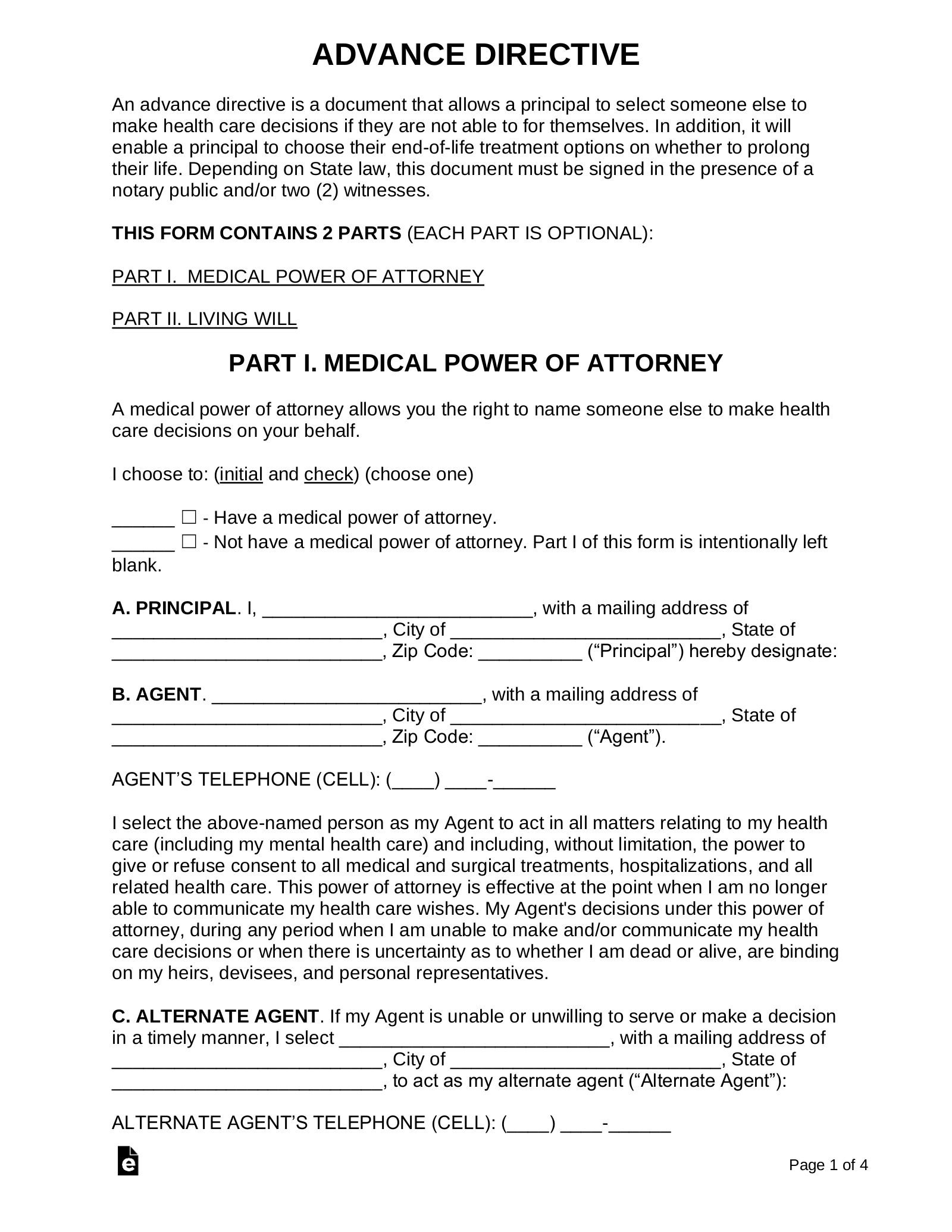An Advance Health Care Directive (AHCD) is a legal document that outlines your wishes regarding your medical care in the event that you become unable to make decisions for yourself. This could happen due to illness, injury, or other circumstances.
What does an AHCD cover?
Healthcare agent: You can appoint a trusted person to make medical decisions on your behalf.

Image Source: eforms.com
How to create an AHCD:
1. Consult a legal professional: While you can find templates online, it’s recommended to consult an attorney to ensure your document is legally valid and addresses your specific wishes.
2. Consider your values and beliefs: Think about what is important to you in terms of medical care and end-of-life decisions.
3. Appoint a healthcare agent: Choose someone you trust to make decisions on your behalf.
4. Review and update: Your AHCD can be updated at any time to reflect changes in your circumstances or preferences.
Conclusion
An Advance Health Care Directive is a valuable tool for ensuring your medical wishes are respected, even if you are unable to communicate them yourself. By creating an AHCD, you can provide peace of mind for yourself and your loved ones.
FAQs
1. Is an AHCD legally binding? Yes, an AHCD is legally binding in most states. However, the specific requirements and enforceability may vary.
2. Can I change my AHCD? Yes, you can update your AHCD at any time. It’s important to review and update your document regularly to reflect changes in your circumstances or preferences.
3. Who can access my AHCD? Your healthcare agent and medical providers will have access to your AHCD.
4. Can my family members override my AHCD? Generally, your healthcare agent and medical providers are obligated to follow the instructions in your AHCD. However, there may be exceptions in certain circumstances.
5. What if I don’t have an AHCD? If you don’t have an AHCD, your family members may be asked to make medical decisions on your behalf. These decisions can be stressful and may not align with your wishes.
Advance Health Care Directive Form







